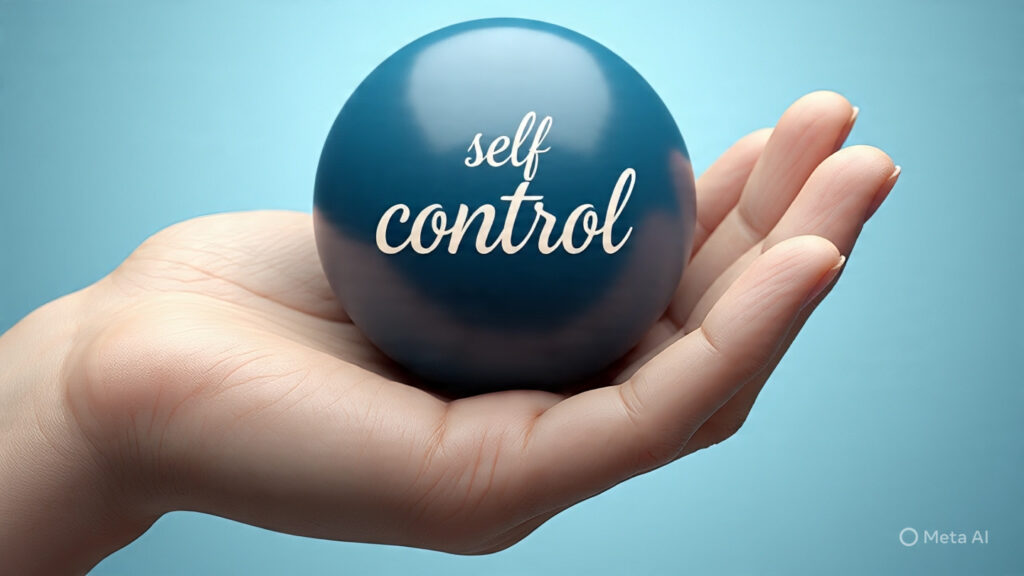What is yama (response or behaviour harmony)?
- Generally, we get stimulus from more than one source. Hence, it is rare that we are able to give any stimulus complete attention.
- The quality of our attention depends on our state of awareness, this is called vijñāna (our awareness of ourselves in the situation).
- Additionally, any drop in awareness creates errors in estimation, expectation and feedback in us as well as the person transacting with us.
- This drop in communication can generate stress, especially if the situation calls for a high degree of adjustment or has a difficult coping requirement.
- Needless to say, stress increases if the situation results in confrontation or and insensitive response.
- So, we can see that stress results from the loss of awareness and this creates a fear of the unknown, which affects our self-worth (asmitā), resulting in fear of change.
 Obviously, we cannot control most aspects of the situation we find ourselves in or the stimulus which comes to us. However, we can control our response.
Obviously, we cannot control most aspects of the situation we find ourselves in or the stimulus which comes to us. However, we can control our response.
Control of our reaction or response allows both, us and the person transacting with us to work without fear and loss of self-worth (asmitā). Consequently, this increases awareness of the self (jñāna), reduces fear and resistance to change.
As a result, the transaction moves towards a harmonious and substantial relationship based on sustainable solutions and increased awareness (prajñā).
Rāja-yoga or aṣṭāṅga-yoga or 8-limbed-yoga recommends yama or behaviour control as the first step towards situational awareness.
Yama has different meanings, “rein, curb, or bridle, discipline or restraints”. In the present context, it means “self-control or forbearance” when dealing with the environment.
Importantly, though rāja-yoga formally mentions yama and niyama as the first two steps in development of yoga, yama and niyama are required for all types of yoga as well as for good-living. In fact, these principles instil discipline in the practitioner resulting in harmony within and in the reactions of the person in everyday life also.
What does Patanjali Yoga Sutra say about yama (Chapter 2 – verse 27 to 30)
- This is the seven-stage process to the edge of the subject of awareness. The seven stages are: all knowledge is resident in the Self, cessation of grief, samādhi, adjusting on return from samādhi, realisation that the material world has no value, erasing of memory, eternal union with the infinite.
- Practice of yoga destroys spiritual impurity and allows one to gain knowledge of the Self and ability to discriminate.
- Yama- niyama/ āsana/ prāṇāyāma / pratyāhara/ dhyāna/ dhārana/ samādhi form the eight limbs.
- Ahiṃsā (non-violence), satya (truth), asteya (non-stealing), brahmacaryam (sexual continence), aparigrāhya (eschewing possession) constitute yama.
Hatha Yoga on yama (Chapter 1- verse 15 to 17)
- 6 virtues impede development in hatha-yoga – they are over-eating, excessive exertion, excessive talking, excessive adherence to rules, company of humans and unsteadiness.
- 6 habits bring success – zeal, boldness of drive and willingness to start, patience, perseverance, ability to discriminate, clarity of purpose and aloofness.
- The 10 rules of yama are – ahiṃsā (non-violence), satya (truth), asteya (non-stealing), brahmacaryam (sexual continence), kṣama (forgiveness), dhṛti (fortitude), dayā (compassion), ārjava (simple, sincere and straightforward), mitāhāra (controlled diet), soucam (cleanliness).
What are the elements of yama recommended by School of Yoga
Yama is the first element of situational awareness (prajñā). It enables us to interact with our environment such that everyone we interact with experiences peace and harmony (shanti) and does not feel threatened. It results in us being able to enjoy a stable, balanced and harmonious relationship with our environment.
Six key elements in yama which cover most aspects of behaviour with the external environment are non-violence (ahiṃsā), truth or integrity (satya), sexual continence (brahmacarya), non-stealing (asteya), and equanimity (aparigrāhya) and diet control (mitāhāra)
Effective, yama is being able to align one’s conditioning (svadharma) with that of others to achieve common goals while instilling the sense of peace in all entities affected by one’s action. Therefore, yama means exercising restraint in one’s reaction, to stimulus and subsuming one’s personality in any transaction.
When one implements these elements, there is an increased sense of discrimination between value and non-value (vivekam) as well as reduced emotional turmoil (vairagyam) resulting in increased situational awareness (prajñā).
Also, when one implements these elements, there is an increasing sense of control and peace because the interaction become less threatening and more collaborative. As a result, there is reduced emotional turmoil, an increased awareness of one’s situation or vijñāna and conditioning or svadharma.
Points to Ponder on yama.
Internal Tags: Karma, Dharma (conditioning), Stress and Situational Awareness, Stress and prana, Awareness measures, Bhakti Yoga fundamentals, Jnana Yoga, Karma Yoga, Hatha Yoga and Raja Yoga.
External Tags: Consciousness
- Do we control events?
- What is the best way to react? What is the end we should aim for?
- Is it possible to achieve a win-win solution every time?
- If we cannot achieve a win-win solution, then how should we manage the situation?
- Can we react, ensure success, yet ensure peace in any reaction?
- Is transparency in a reaction important and possible?
- Is it important for us to respect the other person’s svadharma in a situation?
- How do relationships get affected? Why do they get disturbed?
- What does it take to restore a disturbed relationship?
- Can a relationship be one-sided? How do you manage an important one-sided relationship?
- How important is patience in a relationship?
- What is the importance of communication in maintaining relationships?
- How do you use communication to diffuse tension?


